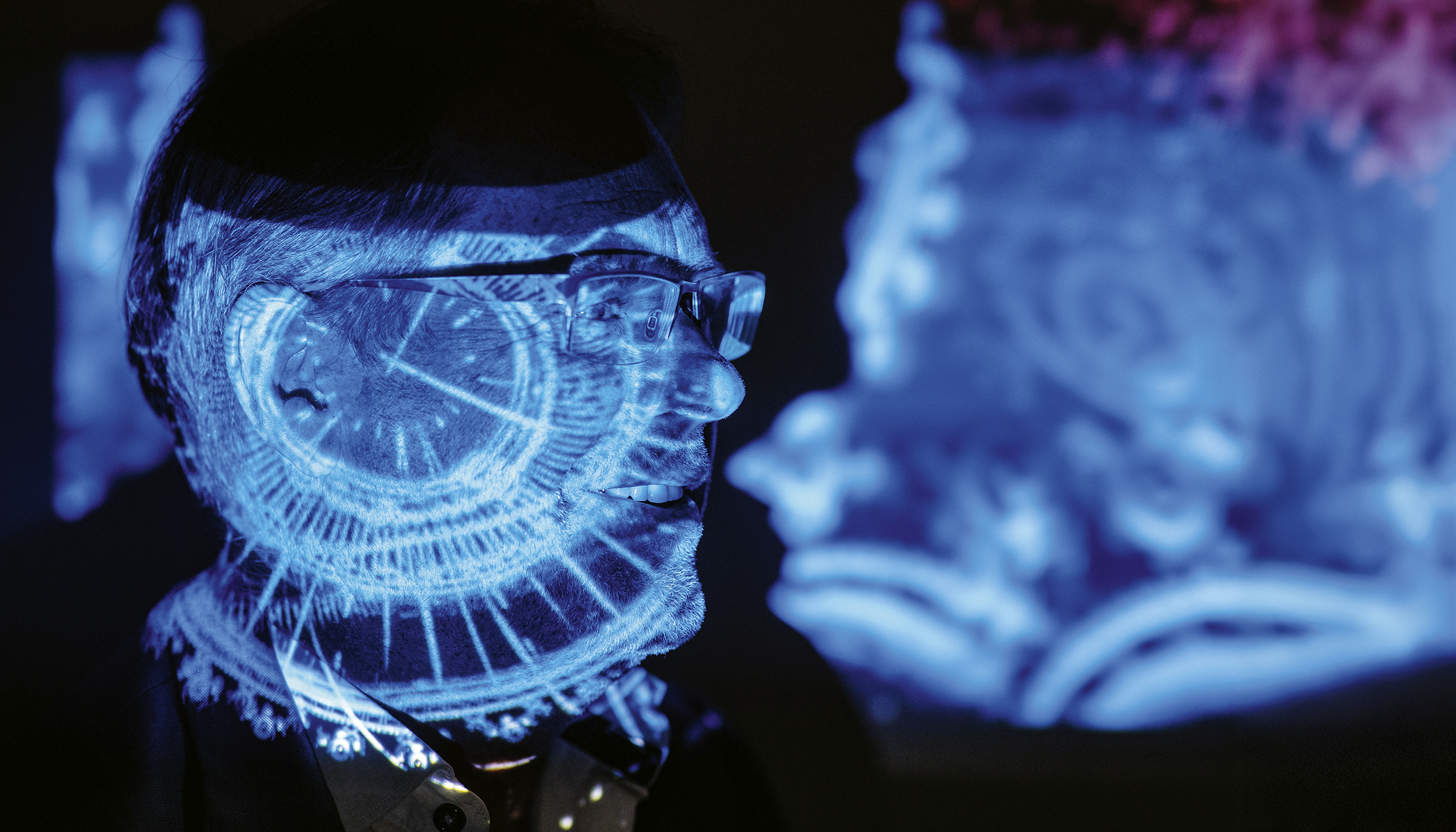Will this Lot Fourteen company be SA’s first unicorn?
Posted June 19, 2025

Professor Andre Luiten knows that timing is everything – it’s what has driven his company QuantX Labs to become a world leader in precision timing and quantum sensing.
From a flagship Cryoclock that can deliver the world’s purest output signals for military radar, to sensors that can detect enemy submarines, the Lot Fourteen company is pushing the boundaries in its field.
Its groundbreaking technology developed in partnership with defence industry and researchers at the University of Adelaide has seen QuantX Labs’ combined annual revenue and workforce grow 50 per cent year-on-year since it was founded in 2017, with 40 employees operating at Lot Fourteen’s SpaceLab.
And 2025 is shaping up to be the launchpad for another defining period for the company which will test its optical atomic clock technology in space and launch its first ever capital raise to develop off-the-shelf technologies for the commercial market.
Supercharge Growth
Luiten, QuantX Labs managing director and co-founder, says the company is seeking up to $25 million to double the workforce by the end of the year, expand production in Adelaide and support a sovereign supply chain capability in Australia.
“We will do $10.5 million in business this year but it’s my ambition for QuantX Labs to be a billion-dollar company developing new technologies for critical civilian infrastructure,” he says.
“We will go from a company that’s working with customers to deliver solutions to challenges they have identified, to a company that will take our suite of technologies and mature them to be products that are suitable for both civilian and defence needs.
“We will need to drop the cost of our products significantly and the way we can do that is to bring more manufacturing in-house instead of relying on long international supply chains – that will mean more people and a greater production capacity so we can produce at scale.
“Embarking on this capital raise is an exciting period for this business; it’s been quite unusual that we’ve managed to get where we are today without taking external capital.”
At the heart of the company’s innovation are ultra-accurate clocks to synchronise complex computing tasks and enhance radar tracking of military threats, and sensors to detect enemy submarines, find buried munitions or map minerals deep underground.
A world without GPS
A growing focus of QuantX Labs’ capabilities is the development of its portable next-generation optical atomic clock technology, named Tempo.
More than a new way of measuring time and locations with unparalleled precision, QuantX Labs’ network of these land-based optical atomic clocks could mitigate the vulnerability of GPS to jamming and spoofing attacks or loss of signal due to environmental conditions.
Last year, the company secured a landmark deal to sell its first TEMPO technology to the Australian Department of Defence for testing and evaluating of timing in critical defence hardware such as communication and navigation systems in a GPS degraded environment.
Initial testing of these first edition optical atomic clocks is showing significant performance improvement over the current microwave atomic clocks used in today’s Global Navigation Satellite System.
Optical clocks, which use light oscillating at higher frequency than microwaves, offer greater accuracy and stability than microwave atomic clocks.
Luiten says the vulnerability of GPS signals is a growing concern globally with many recent incidents, for example, of civilian aircraft having GPS signals jammed.
“Everyone is walking around with a GPS receiver in their phone and so many facets of our modern society are all dependent on the availability of it,” he says.
“Solving the problem should a GPS signal disappear is a focus of our company. It’s a challenge that the military is acutely aware of because they have people and assets in danger if GPS systems were to fail or be hijacked.
“The military sector understands the need to solve this issue of GPS denial, but actually it could be a much broader problem for civilian society as well.”
To the moon and beyond
A sub-system of their Tempo clock technology has undergone rigorous space-environment testing, and will be launched into orbit this year under the Australian Space Agency’s Moon to Mars
program ahead of an expected full launch in 2026 in a major step towards Australian sovereign capability in space timing.
Future applications of the next-generation space timing could be the beating heart of a future timing network to provide sovereign GPS and navigation timing solutions for Australia, or enhanced autonomy and navigation in deep space.
The precise timing and security advantages that optical atomic clocks can offer will also be of increasing value in synchronising operations and data integrity of critical infrastructure such as data centres, Luiten says.
An eye on the sky
The company’s centrepiece Cryoclock technology has been developed for integration into Australia’s Jindalee Operational Radar Network (JORN) which detects threats approaching Australia from the north.
At the heart of the clock is a 1400-carat man-made sapphire crystal cryogenically cooled and has a frequency instability that is equivalent to losing or gaining only one second every 40 million years.
The signal purity can deliver increased range and sensitivity of the JORN system enabling detection of the smallest targets.
The company has a long relationship with the Institute of Photonics and Advanced Sensing at the University of Adelaide, working together to develop a unique translation pathway to commercialise research outputs.
QuantX Labs is also home to RavensNest an invention incubator for interdisciplinary research between academia, industry and DST Group at Lot Fourteen that will fast-track transformative defence technologies from research to sovereign capabilities.
Creative Commons.
Great things come to those who subscribe
Subscribe
"*" indicates required fields
Adelaide 5000
Developed by Frame Creative
Design by The Sideways Theory
Design by Sixth Street Design
Developed by Frame Creative
© Lot Fourteen All Rights Reserved

